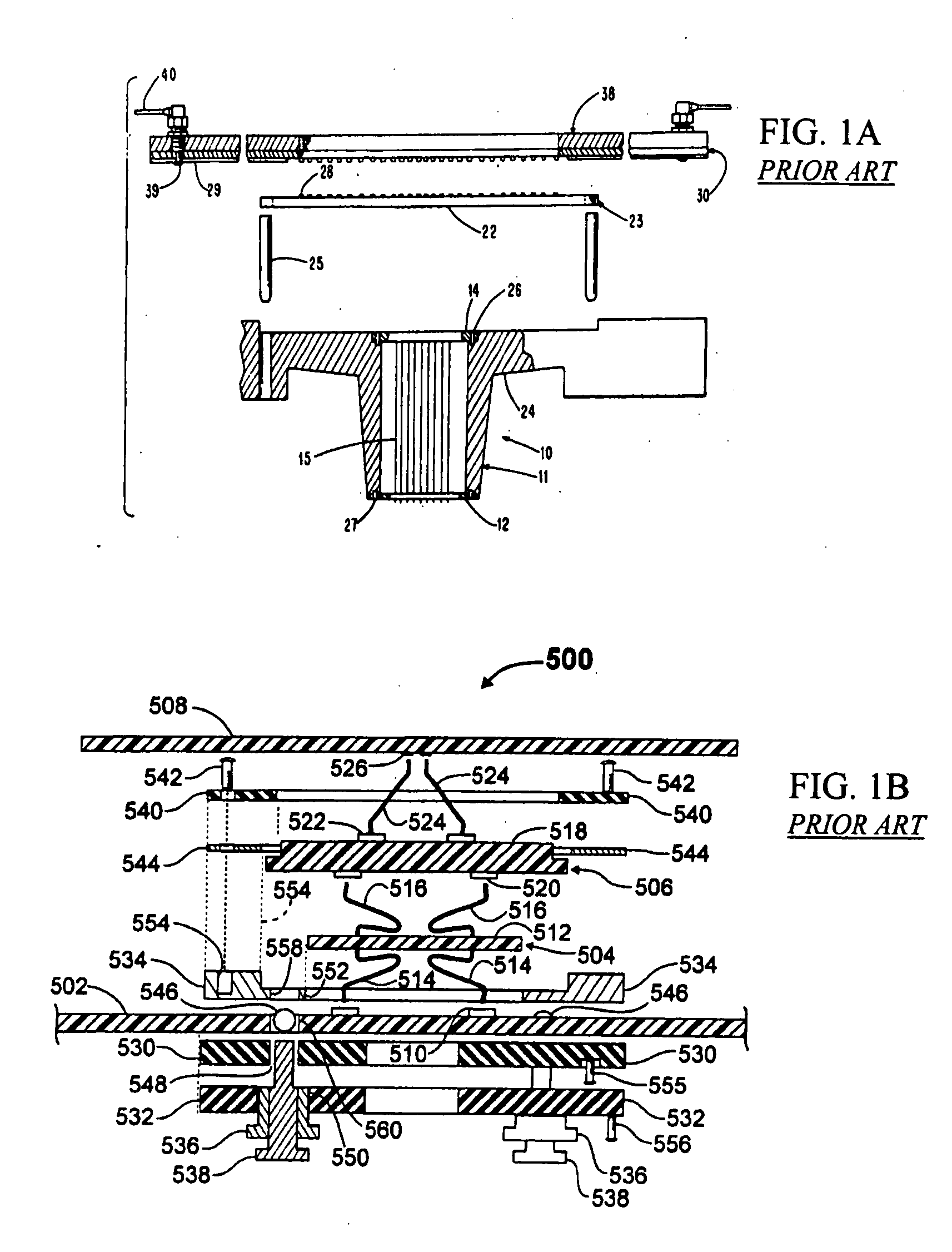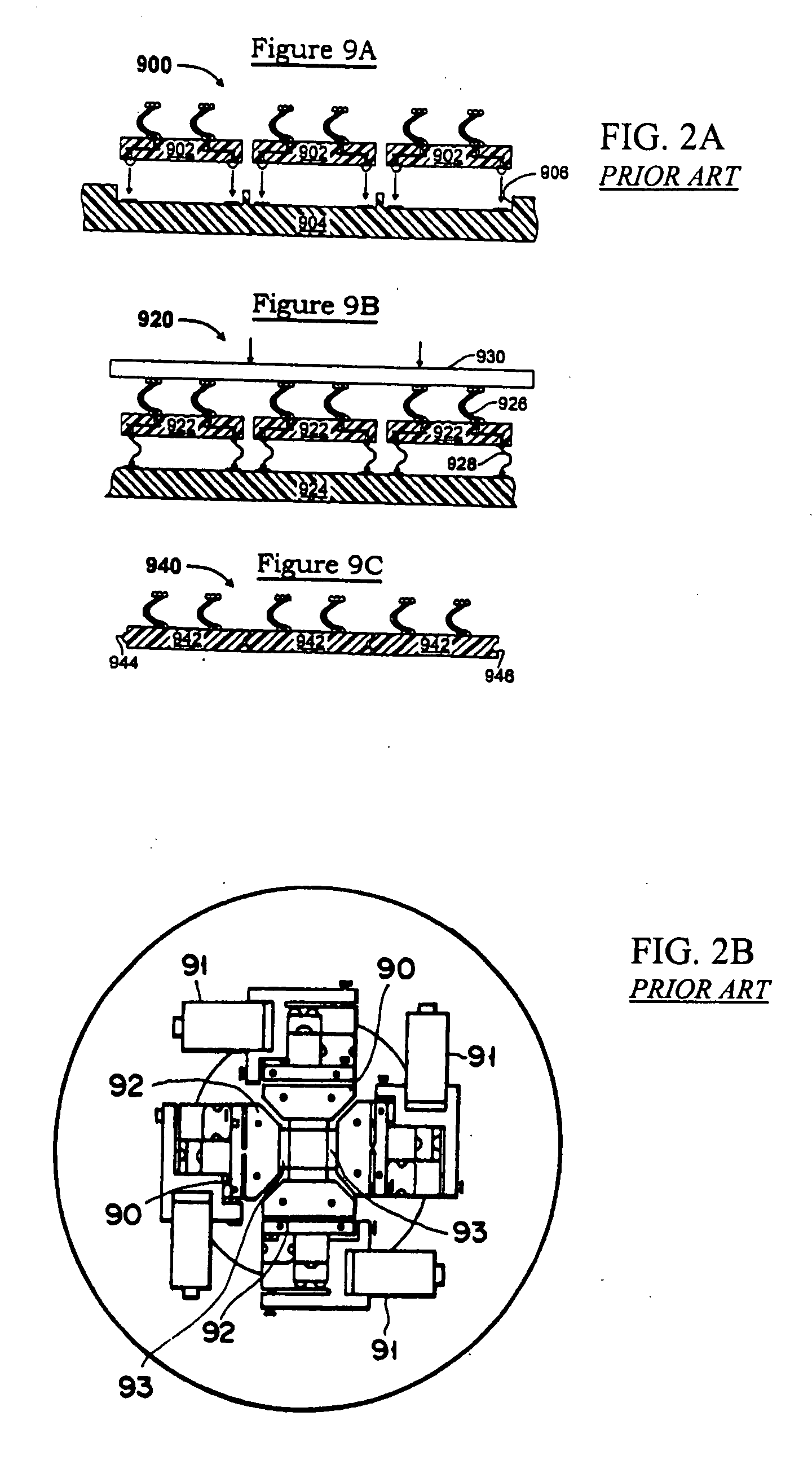Method of forming probe card assembly
a technology of probe tip and assembly method, which is applied in the direction of manufacturing tools, semiconductor/solid-state device testing/measurement, instruments, etc., can solve the problems of non-planarity of the probe tip, z error in the manufacturing process, and usually direct errors, etc., to achieve easy assembly and disassembly, and less expensive construction. , the effect of high mechanical precision of the substrate location
- Summary
- Abstract
- Description
- Claims
- Application Information
AI Technical Summary
Benefits of technology
Problems solved by technology
Method used
Image
Examples
Embodiment Construction
[0041]FIG. 3 illustrates a probe card assembly 300 having a semi-permanent mount according to an embodiment of the present invention. As shown in FIG. 3, the probe card assembly is comprised of a probe contactor substrate 310 having support structures, illustrated as support posts 320, coupled thereto. The probe contactor substrate 310 is assembled so as to be coupled to the printed circuit board (“PCB”) 330 with a compliant interposer 340 in place. The contactor substrate 310 is aligned with the reference points 360 in an orientation such that the probe contactors' 395 tips are in a plane that is parallel to plane formed by the reference points 360. The reference points 360 in FIG. 3 are of the kinematic mountings points variety as discussed earlier, however, it is important to note that if the probe card assembly does not have such mounting points 360, then the probe contactors' 395 tips are in a plane that is parallel to another reference plane such as that of the bottom surface ...
PUM
| Property | Measurement | Unit |
|---|---|---|
| height | aaaaa | aaaaa |
| temperature | aaaaa | aaaaa |
| temperature | aaaaa | aaaaa |
Abstract
Description
Claims
Application Information
 Login to View More
Login to View More - R&D
- Intellectual Property
- Life Sciences
- Materials
- Tech Scout
- Unparalleled Data Quality
- Higher Quality Content
- 60% Fewer Hallucinations
Browse by: Latest US Patents, China's latest patents, Technical Efficacy Thesaurus, Application Domain, Technology Topic, Popular Technical Reports.
© 2025 PatSnap. All rights reserved.Legal|Privacy policy|Modern Slavery Act Transparency Statement|Sitemap|About US| Contact US: help@patsnap.com



